A while ago, we asked the user experience and research community on Twitter to share the biggest challenges they have faced when trying to design accessible and inclusive products or run research and testing with disabled users. The 3rd of December being International Day of Disabled Persons, we thought it would be the perfect time to share these challenges on our blog.
Here is what the community had to say.
Stakeholders/colleagues don’t see the value

US-based UX designer and researcher Russ Troester may not have experienced this challenge personally, but his guess is spot on. And he wasn’t the only one to mention this issue: UX designer and accessibility advocate Kari Goin Kono said that “collaborators don’t see the value of the time and knowledge required to make a project accessible,” while Alicia Jarvis, Inclusive Design Practice Lead at Canadian bank RBC, wrote about product owners and product managers not being aware of the importance of prioritising accessibility.
Another tweet mentioned “if it’s not a direct money maker, it’s hard to get the resources necessary.” Allison Herrera, UX researcher at Harvard Medical School, complained about “stakeholders only wanting digital accessibility scans and not research with people,” usually because of the related costs.
Lack of know-how
Accessibility and inclusion expert at the Canadian Digital Service, Julianna Rowsell, listed a couple of issues: “1. Not having done continual user research 2. Thinking accessible design has less aesthetic, or by trying to ‘fix’ a prototype after the fact. 3. Uninformed, bolted on a11y, isn’t accessible.”
Simone Borsci, Professor at Twente University in the Netherlands and senior researcher at London’s Imperial College, highlighted the lack of methods when running UX research and testing with people with different types of disabilities.
Lack of diversity in research/design teams
Julianna Rowsell added another challenge to the list.

“Usability testing with people with diverse needs is key. Screen readers, magnifiers, plain language, high contrast, keyboard only accessible designs. Part of this can be done through purposeful user research and hiring more people with disabilities for their talents and perspectives,” Julianna wrote on Twitter, to which Simone Borsci added a reminder about the importance of validating testing methods adapted to different needs.
Integrating accessibility into an existing product or going beyond the MVP
UI/UX designer Jason Bennet added a challenge to the list: “knowing that your product is going to have to integrate with a legacy or third-party system that isn’t accessible, so you’re not able to improve the whole of the user journey.” UXR intern Courtney Dunn highlighted the issue with costs, repeating an excuse she has heard in the past: “it’s way too expensive to retrofit accessibility into legacy products.”
Owen O’Neil, UX researcher at comparethemarket.com, mentioned the barriers faced when trying to go “beyond accessibility MVP (screen readers, keyboard control) and how creating something truly accessible affects design guidelines/brand.”
And, finally… user recruitment challenges
Bristol-based Emma Howell, Head of Research at cxpartners, summarised the challenge in one word.

Emma is an experienced user researcher and inclusion advocate, and has collaborated with People for Research on a number of guest blogs. You can read the most recent one here, about the redesign of the (Talk to) FRANK website.
Simone Borsci agreed with Emma’s opinion, mentioning how challenging it is to “involve in the design and testing people with different perspectives and abilities” due to the usually high cost of recruitment, while also acknowledging that doing this “is the only road to inclusiveness.”
As part of our efforts at People for Research to promote digital accessibility and inclusion, we have launched a new panel called Accessibility Collective, a fixed-price approach to the recruitment of disabled users for user research and testing. We also shared some useful user recruitment tips at a recent Bristol meetup; we have summarised them below, but you can read this blog for more details:
👉 Give yourself/your recruitment partner more lead time than usual.
👉 Adapt your expectations: expect a higher drop-out rate and prepare for this.
👉 Make sure your budget can accommodate the higher costs of recruiting people with disabilities (or find alternative solutions similar to our Accessibility Collective).
👉 Be understanding and flexible.
👉 Do your homework.
To find out more about our accessibility recruitment service, including the Accessibility Collective and Digital Inclusion Panel, follow this link.
If you would like to find out more about our in-house participant recruitment service for user testing or market research get in touch on 0117 921 0008 or info@peopleforresearch.co.uk.
At People for Research, we recruit participants for UX and usability testing and market research. We work with award winning UX agencies across the UK and partner up with a number of end clients who are leading the way with in-house user experience and insight.


